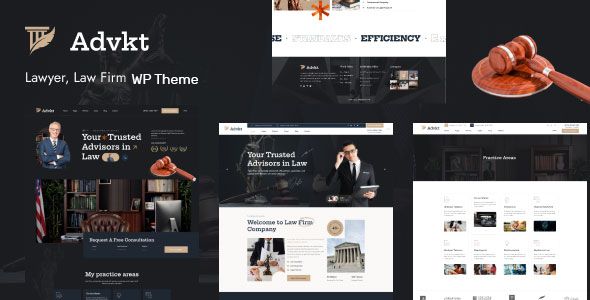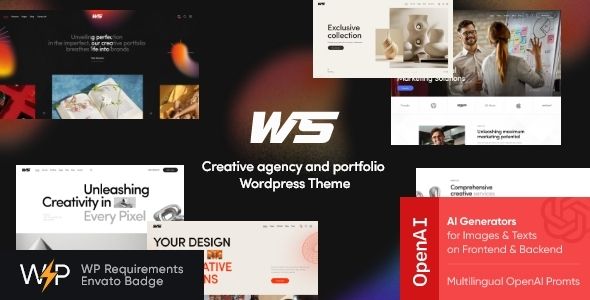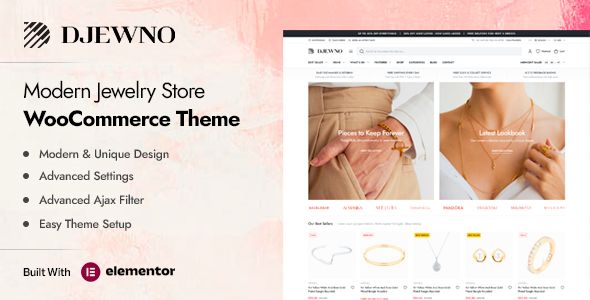Invadex – Business Consulting WordPress Theme

- Description
- Reviews
- FAQ

Invadex – Business Consulting WordPress Theme
Version advantages first. This edition of Invadex – Business Consulting WordPress Theme ships in a license-free package (under GPL) that’s ready to use after install, includes all Pro features, supports unlimited sites with a one-time purchase, and stays in step with the official release. In practical terms, you can launch a polished consulting website this week, clone a lead-gen microsite for a new offering next month, and roll out region-specific pages for international offices—without domain locks, activation servers, or renewal gates. Updates arrive on the same cadence as upstream releases, so compatibility and security keep pace while you grow.
Product Overview
Invadex – Business Consulting WordPress Theme is built for firms that sell clarity: strategy boutiques, operations consultants, financial advisory teams, PMOs, HR transformation partners, technology integrators, and outcome-driven agencies. The theme’s design language is authoritative without being loud—confident headlines, rational spacing, and understated color accents—so prospects focus on substance, not spectacle. Everything about Invadex nudges visitors toward the next sensible step: book a consultation, request a proposal, or download a scope outline.
You’ll find ready-to-compose sections for Service Catalogs, Industry Verticals, Case Studies, Advisors & Partners, Playbooks & Frameworks, Pricing & Engagement Models, Events & Webinars, Insights/Blog, Careers, Locations, and Contact/Briefing. Blocks are modular and reusable across pages, so non-developers can assemble conversion-strong layouts in hours.
Under the hood, Invadex favors speed and legibility. Above-the-fold structure is predictable to minimize layout shift. Media components respect aspect ratios. “Fancy” effects are optional, not mandatory. The result is a website that feels fast, confident, and deliberate—exactly how a good consulting engagement should feel.
Who It’s For
-
Strategy & management consultancies communicating offers like growth scans, market entry, or operating model redesign.
-
Operations and Lean specialists who need process-focused visuals and before/after KPI snapshots.
-
Finance & turnaround advisors presenting restructuring options, diligence services, and cash-flow programs with calm authority.
-
Technology consulting & integration teams mapping solutions to outcomes—modernization, cloud migration, data governance, security posture.
-
HR & change partners offering culture, leadership, and org design programs with clear phases and artifacts.
-
Boutique consultancies that rely on proof and referrals; you’ll get credible case study and thought-leadership patterns out of the box.
-
Multi-office networks standardizing a brand across regions and languages; unlimited site usage makes fleet-wide rollouts straightforward.
Core Philosophy
-
Tell the truth, briefly. Name the problem, describe the approach, prove the outcome, and invite a conversation.
-
Respect the buyer’s time. Executives skim. Invadex favors scannable sections, strong subheads, and succinct bullets.
-
Build once, reuse everywhere. A single feature or framework card can appear on Services, Industries, and a webinar landing page without rework.
-
Speed is a virtue. Pre-sized media, lean scripts, and opt-in effects keep pages snappy even on mobile data.
-
Consistency signals competence. Global tokens for type, color, and spacing ensure every page feels intentional.
Key Capabilities & Real-World Use Cases
1) Consultation-First Heroes
Every Invadex homepage starts with one clear action: Book a Consultation, Request a Proposal, or Start a Discovery Call. Pair it with a subhead that names your result (“Reduce time-to-decision for strategic bets by 40%”). Add three proof chips—years operating, median ROI delta from case studies, and industries served. Mobile users see a tappable CTA within two swipes; desktop users receive context without scrolling.
2) Service Catalogs That Scope Work Honestly
Publish cards for Strategy Sprints, Market Intelligence, Operating Model, Transformation PMO, Revenue Enablement, Cost-Out programs, Data & Analytics, Risk & Compliance, and Implementation Support. Each service card includes:
-
Who it’s for
-
What we deliver (artifacts)
-
Engagement length & cadence
-
What’s out of scope (earns trust)
-
Next step (book, request scope, or download brief)
3) Outcome-Led Industry Pages
Create vertical pages for Financial Services, Healthcare, Manufacturing, Consumer & Retail, Technology & SaaS, Energy & Utilities, and Public Sector. Open with an industry-specific pain statement, list 3 constraints that make this vertical unique, and show a small KPI panel (e.g., NPS up 18 points, order cycle down 22%). Invite a vertical-specific call rather than a generic contact form.
4) Case Studies That Decision-Makers Read
The case study template avoids fluff:
-
Context: business goal, constraints, time window
-
Intervention: 3–5 concrete actions, not vague “advised” language
-
Result: one chart or metric with a single sentence of insight
-
Transferable lesson: what another client can expect
-
CTA: talk to the team that delivered it
5) Frameworks & Playbooks
Consulting buyers love to see the method. Show your Assess → Design → Pilot → Scale cadence with artifact previews—current state map, value tree, roadmap, KPI stack. Offer a lightweight download gate only where it makes sense (keep friction low on mobile).
6) Pricing & Engagement Models
Present a calm three-band grid:
-
Project — fixed scope, defined artifacts, short timeline
-
Retainer — advisory on call, monthly cadence, agreed KPIs
-
Transformation — on-site cadence, embedded PMO, change management
Under the grid, add a Procurement & Security Review footnote to explain the next steps for larger organizations (NDA, stakeholder map, timelines).
7) Advisors & Partners Pages
Advisor cards carry headshot crops that read well on phones, plus short bios, specialties, notable publications, and a human detail (“Favorite facilitation technique”). Use a tasteful strip for certifications and partnerships, but keep logos secondary to outcomes.
8) Events & Webinars
Announce quarterly executive briefings or playbook deep dives with a countdown, agenda, speakers, “Who should attend,” and a tight form. After the event, swap the form for an on-demand replay and three key takeaways.
9) Insights & Editorial
Long-form pieces deserve good typography. Invadex’s reading rhythm handles 2,000-word essays, frameworks, and checklists with anchor links and skim-friendly subheads. Excerpt cards assemble into hubs like AI in Operations, Change Management, Pricing Strategy, and Service Design.
10) Multi-Office & Localization
Clone the Location template for each office with address, transit/parking notes, local leadership, and city-specific testimonials. Unlimited site usage lets you maintain region-tuned microsites under one cohesive system and update them on a single cadence.
Installation & Setup
-
Environment
Run a current WordPress/PHP version, enable HTTPS, configure transactional email so confirmations land reliably, and set media sizes (WebP/AVIF preferred) with explicit width/height attributes to avoid layout shift. -
Install Invadex
Upload the theme ZIP, activate, and use the quick-start import to pull in base pages: Home, Services, Industries, Case Studies, Advisors, Pricing, Insights, Events, Careers, Locations, Contact. -
Set Brand Tokens
In Global Styles, define the primary/action/neutral palette, heading/body font pairs, and spacing. Tokens keep dozens of pages consistent without heavy custom CSS. -
Homepage Blueprint
Hero (single CTA) → “Who we help” strip → Three pains with solutions → Framework snapshot → Proof band (metrics or select client quotes) → Pricing teaser → Insight chips → Final CTA. -
Navigation & IA
Top level: Services, Industries, Case Studies, Pricing, Insights, About/Advisors, Contact. Tuck Careers, Events, and Legal into the footer. -
Forms & Confirmations
Use a two-step consultation form. Step 1: essentials (name, work email, company). Step 2: optional context (timeline, budget band, desired outcomes). Confirmation pages should state response windows (“We’ll reply within one business day”) and a light prep list. -
Performance Pass
Keep one hero and one gallery per page. Defer non-critical JS, lazy-load below-the-fold media, and test on a mid-tier Android device to ensure snappy interactions.
Design System & Editorial Tone
-
Typography: A confident display face for headings, a high-readability sans for body. Keep paragraphs short (2–4 sentences) and lean on subheads.
-
Color usage: Calm neutrals with a restrained action color. Use accent sparingly for CTAs, important alerts, and success metrics.
-
Iconography: Purposeful, not decorative—compass (strategy), cog (operations), graph (growth), shield (risk), network (integration), people (change).
-
Photography: Real teams, whiteboards, workshops, and field work—avoid contrived stock. If you must use stock, edit for a consistent color temperature.
-
Microcopy: Replace jargon with clarity. Where stakes are high, be precise (“We run 60-minute discovery with 3 stakeholders and commit to a scope outline in 5 business days.”).
-
Accessibility: Maintain contrast, provide keyboard focus states, and write alt text that describes meaning, not just appearance.
Content Strategy: First 45 Days
-
Week 1: Ship the core. Home, Services, one Industry page, two case studies, Contact. Publish one “how we work” essay.
-
Week 2: Proof beats polish. Add one mature case study and a KPI recap post (“What changed in the first 90 days”).
-
Week 3: Vertical depth. Publish two Industry pages with localized constraints and a small glossary.
-
Week 4: Pricing & expectation setting. Launch the three-band pricing page and a “Procurement & Security Review” explainer.
-
Week 5–6: Events + nurturing. Announce a webinar with a clear agenda; after the event, convert the page to on-demand and post a three-point summary.
Performance & SEO Guardrails (For Your Own Site)
-
Core Web Vitals: Pre-size media, avoid heavy sliders above the fold, and defer scripts that don’t support immediate interaction.
-
Semantic headings: Let H1/H2 mirror the visitor’s question. “Operating Model Redesign—Scope, Timelines, Risks” beats cleverness.
-
Topical hubs: Fewer, better pillars with clusters (internals link clearly, not mechanically).
-
Freshness: Maintain a changelog for your playbook and post short reflections after major engagements or events.
-
Local relevance: If you market by city, give location pages substance—lead partners, local testimonials, regional regulations—not template filler.
Trust, Compliance & Data Handling
-
Privacy summary: what you collect, why, retention windows, and contact info.
-
Email deliverability: configure authentication so consultation confirmations reach inboxes.
-
Role-based access: lock down admin accounts; encourage 2FA.
-
Backups & updates: test on staging, then roll updates during a quiet window.
-
Accessibility commitments: describe what you’ve done (contrast, labels, keyboard paths) in plain language.
Multi-Site & Agency Operations
Because this package is license-free under GPL, includes all Pro features, supports unlimited sites, and syncs with the official release, you can standardize Invadex across a fleet:
-
Main brand site + vertical microsites + event pages under shared tokens.
-
Regional sites with localized proof, language variants, and consistent navigation.
-
Partner hubs for alliances and co-marketing—clone a base child theme, swap tokens, and deploy in hours.
-
One update cadence for all instances, reducing maintenance overhead.
Maintenance & Update Rhythm
Adopt a calm routine:
-
Clone production to staging.
-
Update the theme; skim the changelog.
-
Visual QA on Home, a Service page, one Industry page, a Case Study, and Contact.
-
Deploy during a low-traffic window; purge cache/CDN.
-
Re-test on a real phone; confirm forms submit and analytics fire once.
Keep visual changes in Global Styles or a child theme so updates don’t overwrite your work. Because Invadex stays aligned with the official release, you inherit compatibility and security improvements over time.
Troubleshooting
-
Forms don’t submit → Exclude endpoints from full-page cache, ensure nonces are fresh, verify HTTPS canonicalization, and double-check any human-verification token.
-
Layout shift on mobile → Add width/height attributes to hero media; limit above-the-fold carousels; preload your primary heading font.
-
Soft logos/screenshots → Export at proper breakpoints; avoid double compression; prefer SVG for logos and simple diagrams.
-
Duplicate analytics → Consolidate to one tag manager and remove legacy snippets left in page headers.
-
Translation gaps after an update → Re-scan strings, re-sync catalogs, and keep slugs aligned across locales.
-
Icon baseline jitter → Use inline SVG and normalize baselines; avoid raster icons in text labels.
-
Slow first paint → Compress hero assets, defer non-critical JS, and limit third-party embeds above the fold.
-
Unexpected spacing → Check nested block margins; normalize via Global Styles to prevent stacking artifacts.
Licensing Advantages (Plain-English Recap)
-
Unlimited sites: build brand, vertical, regional, and event sites without activation hoops.
-
One-time purchase: predictable budgets—no per-domain renewals.
-
All Pro features included: access to every premium block, template, and pattern from day one.
-
Syncs with the official release: compatibility and security improvements arrive on schedule.
-
Ready after install: no serial servers or domain locks—activate and build.
-
Agency-friendly: standardize a base build and replicate rapidly for new clients or regions.
Launch Checklist
-
Define brand tokens (colors, type, spacing) in Global Styles.
-
Publish Home, Services, one Industry page, two Case Studies, and Contact.
-
Add Advisors with real photos and succinct bios.
-
Create a Pricing page with three honest tiers and a procurement note.
-
Replace all demo media with authentic visuals; compress and set explicit dimensions.
-
Configure the two-step consultation form and a clear confirmation page.
-
Run a mobile performance pass; validate Core Web Vitals.
-
Enable nightly backups and set a monthly update window.
FAQ
1) Can I use Invadex on multiple sites?
Yes. The package is license-free under GPL and supports unlimited site usage—ideal for regional rollouts and campaign microsites.
2) Does it include all premium templates and blocks?
It includes all Pro features: service catalogs, industry pages, case study layouts, pricing bands, framework/roadmap blocks, events/webinar pages, careers, locations, and more.
3) Will I receive ongoing updates?
Yes. Invadex syncs with the official release cadence so compatibility and security improvements continue to land.
4) Is activation required to unlock components?
No. It’s ready to use after install—no domain locks, serial servers, or “pro gate” hurdles.
5) How should we structure pricing for consulting?
Use three tiers—Project, Retainer, Transformation—with who it’s for, deliverables, cadence, and what’s out of scope. Add a procurement note for larger orgs.
6) Can I present frameworks without giving away the farm?
Yes. Show the skeleton and artifacts (assess → design → pilot → scale) with concise descriptions. Specifics build trust more than secrecy does.
7) Does Invadex support long-form thought leadership?
Absolutely. The reading rhythm is tuned for deep essays and checklists, with anchored subheads and clean tables.
8) Is it suitable for multi-office and multilingual setups?
Yes. Clone the Location template, localize copy, mirror navigation, and keep NAP consistent. Translation is supported; re-sync catalogs after updates.
9) How do I keep pages fast?
Pre-size images, serve next-gen formats, defer non-critical JS, and avoid heavy sliders. Keep one hero per page and lazy-load galleries.
10) Will updates overwrite my design work?
Keep visual changes in a child theme or Global Styles. Test updates on staging, then deploy during a quiet window.
11) Can I show client logos and badges?
Yes—use a modest proof strip. Keep logos secondary to outcomes; credibility comes from results, not a wall of brands.
12) What’s the best way to publish case studies?
Use the Context → Intervention → Result pattern with one chart or metric and a short transferable lesson. Keep it factual and reproducible.
13) Does Invadex play nicely with forms and analytics?
Yes. It works well with common stacks. Keep one tag manager, avoid duplicate snippets, and exclude form endpoints from full-page cache.
14) Can I run webinars and executive briefings?
Yes. Use the event template (countdown, agenda, speakers). Afterward, convert to on-demand with three takeaways and a follow-up CTA.
15) How do I set expectations for discovery calls?
Describe the 30–60-minute agenda, who should attend, and what you’ll deliver afterward (scope outline, timeline, decision windows).
16) Is there support for recruiting?
Yes. Role cards, application checklists, interview steps, mentoring notes, and a values section help you attract credible candidates.
17) Can I build vertical pages that feel truly specific?
Definitely. Start with constraints unique to the industry, show one KPI improvement, and link directly to a vertical-aware consultation.
18) What about procurement and security reviews?
Add a short explainer page covering NDA, data handling, stakeholder lists, and decision gates. Place a secondary CTA near Enterprise-level pricing.
Q: Do I need a license key?
A: No. All products are Pre-Activated. You can use 100% of the Premium features immediately.
Q: Can I use the One-Click Demo Import?
A: Yes, absolutely! We ensure the demo import feature works perfectly.
Q: Can I use the products on multiple websites?
A: Absolutely. The GPL license allows use on unlimited domains.
Q: Are the files safe?
A: Yes. All files are scanned by McAfee and VirusTotal before uploading.
Share Now!


















